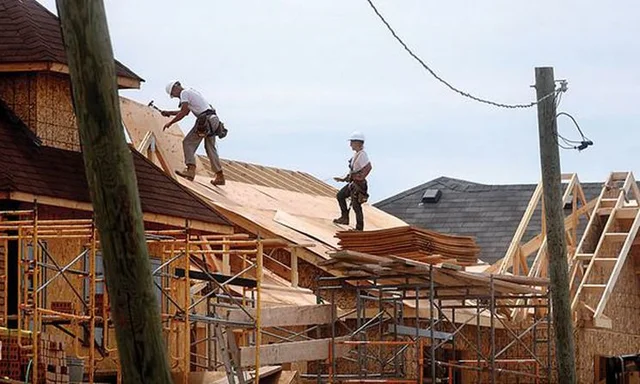Oshawa makes clear Bill 23 should go back to the drawing board
Published November 23, 2022 at 12:26 pm

Oshawa has made its stance on the Ontario government’s proposed More Homes Built Faster legislation clear: it sucks.
The City’s actual response was a bit more nuanced than that but the sentiment was the same as Oshawa Development Services commissioner Warren Munro and his staff produced a report that served as Oshawa’s public comments on Bill 23.
The legislation is meant to fast-track housing proposals on municipal agendas by cutting red tape on housing projects by eliminating or drastically decreasing the development charges home builders and developers would have to pay and restricting the powers of conservation authorities and the public to scrutinize development on environmentally sensitive areas such as wetlands or floodplains.
The goal, according to Premier Doug Ford and Housing Minister Steve Clark, is to allow the construction of 1.5 million more homes – including 50,000 on protected greenbelt lands Ford and Clark had previously sworn were off limits for development.
Durham Region has been targeted for 84,000 new homes over the next decade, a rate of construction never before accomplished. Oshawa is on the hook for 23,000 of those homes – the city is in the midst of record-breaking development this year and still won’t come close to building 2,300 houses in 2022.
“Assuming the development industry has access to the resources and skills required to deliver new housing on such a level,” Munro said in his report to Council, “the City has never achieved a building permit issuance rate of 2,300 units in a year.”
The record prior to 2022 for building permits is 1,754 in 2017, though the City has already issued 1,968 to date this year.
Much like the purpose of Bill 23 is to fast-track development, the legislation itself is being rushed through. Representatives from the Association of Municipalities of Ontario (AMO) were denied a chance to speak at committee and former Toronto Mayor John Sewell, a long-time environment supporter, was removed by security after he was prevented from speaking on the issue.
AMO has said the legislation, if approved, will cost Ontario municipalities $5.1 billion over the next nine years in lost development charges, money that is used to pay for the infrastructure needed to support the new developments – from sewer, water and roads to parks. That money would have to be absorbed by the taxpayers.
“Removing or restricting a municipality’s ability to collect and use development charges to fund capital costs will result in the need to fund these costs from the tax levy,” the City report read. “Ultimately taxpayers will be subsidizing new development in the city (which will) force municipalities to reduce service levels, potentially impacting the health, including mental health, and safety of residents.”
Munro, in his report, said the Province would have to provide financial support to municipalities to “offset the losses” the legislation would bring.
Bill 23 would also bring changes to the heritage designation of properties which Munro sees as problematic, noting that removing the public’s ability to appeal municipal decisions on heritage properties could lead to “greater public pressure” on elected officials to make decisions that would be appealed by the applicant.
Bill 23 also cuts the time a property can be protected but not designated as a heritage property from five years to two years, a timeline Munro said is not enough. “Two years is not a sufficient duration,” he said, adding there “many factors” that could delay the process. “The property would be more susceptible to demolition, leading to a significantly increased heritage loss to the City.”
Site plan changes limiting council on requesting architectural details and landscape design on new development would also be a problem, the report noted, as it could lead to developers only building smaller apartments to save costs on waste management (buildings with more than 10 units require private collection) and have “significant impact” on neighbourhood aesthetics.
Changes to zoning requirements that would allow up to three units per lot would lead to parking issues, the report declared. “The reduction in parking appears to be a 416 solution applied to the 905.”
The City also has “significant concerns” on reducing the power of conservation authorities. Conservation authorities – in the case of Oshawa, the Central Lake Ontario Conservation Authority (CLOCA) – provide municipalities with “science-based” expertise on watershed management and the natural environment. “Municipalities will be left with no natural heritage expertise when it comes to reviewing planning applications, and will also prevent municipalities from having conservation authorities provide consulting and peer review functions.”
Which will lead, the report added, to Oshawa having to hire outside counsel, another added cost to taxpayers.
The bill, introduced by Clark last month, is still at the committee stage but with a Conservative majority in the Legislature, is assured of passage.
Oshawa’s public comments will be forwarded to AMO, Ontario Big City Mayors, the Region of Durham, other local Durham municipalities, Durham area MPPs and the City’s Building Industry Liaison Team, which includes the Durham Chapter of the Building Industry and Land Development Association and the Durham Region Home Builders’ Association.







